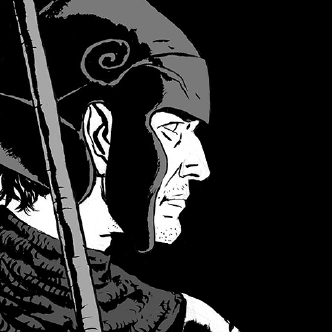Ryan O'Neal – 1941-2023
- Jarek Kupść

- Dec 9, 2023
- 2 min read
Ryan O’Neal could’ve come close to Cary Grant, but ‘70s cinema went in an entirely different
direction. And, one might assume, his personality got in the way. Yet What’s Up, Doc (1972)
and Paper Moon (1973) remain marvellous, and still unmatched, throwbacks to 1930s and
‘40s Hollywood. And O’Neal’s comic timing is flawless.

Defending his choice of O’Neal for Barry Lyndon, Kubrick praised the actor’s gutsiness for
going from Love Story to the mad screwball of What’s Up, Doc. He wanted someone fearless
and not obsessed with projecting a star image. O’Neal’s Lyndon ended up a bit of a blank slate,
befittng the glossy portraiture of Gainsborough, Joshua Reynolds, and Hogarth.
O’Neal was too pretty to match Steve McQueen’s roughness, but inherited The Driver (1978)
from him nonetheless, and did better than expected. The Walter Hill neonoir remains a true
gem, in large part to O’Neal’s monosyllabic inscrutability. He mirrors, but not matches, that
angelic coldness of Delon’s Le samouraï.

In the much-maligned Partners (1982), O’Neal gamely went Leather Man, and even did an
oily softcore cupid photo session, while investigating a series of gay murders. Say what you
must, but Partners and the Dantesque Cruising (1980) were Hollywood’s first attempts to
acknowledge the gay scene as a fact of life. Deemed “homophobic to the point of slander”
(Vito Russo), Partners might be a messy curio, but at least it tried. You can’t imagine Redford
or Reynolds in O’Neal’s part.

His best dramatic acting job was Irreconcilable Differences (1984) – a messy divorce story set in the
film world. It easily surpasses the recent Marriage Story, if only for taking into account the
true victim of a divorce – the child (Drew Barrymore).
Lastly, I’d like to tackle O’Neal’s work from a different angle – his physicality. Among the top
actors, he was the best boxer. Witness his exhibition bout with Joe Frazier, narrated by Ali
himself, and see that he could go the distance. Even with Frazier deliberately pulling his
punches, Ryan moves like a pro. Sure, he punches above his weight class, but the skill and
heart are evident.
Ironically, the only part of Kubrick’s Barry Lyndon that rings false is O’Neal’s fisfight with a
fellow soldier. Inexplicably, the choreography anticipates the Queensbury style of boxing
roughly 50 years ahead of its time. The hand-held camera sticks out like a sore thumb. It
feels like a scene from a different film, but Ryan moves fantastically.

O’Neal made only one boxing picture in his career, the underappreciated The Main Event
(1979), reuniting with Streisand. In it, he puts his tremendous fighting skills to a comedic
effect. It is a fun film that bears multiple viewings.

From the perspective of time, Ryan O’Neal never reached the class or stature of his ‘70s
peers. He coulda been a contender – maybe he briefly was. Perhaps his personal demons got
in the way. But that is an entirely different and heart-wrenching story. Maybe he’s finally
found his peace.



Comments